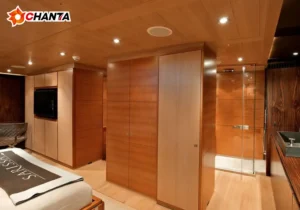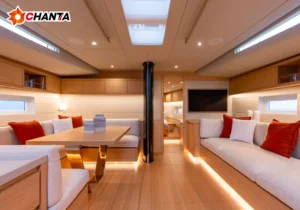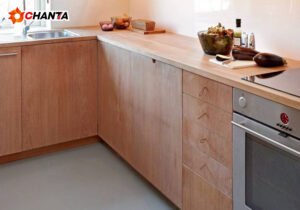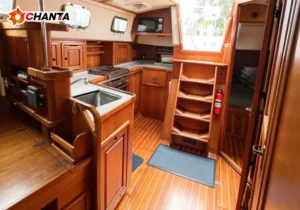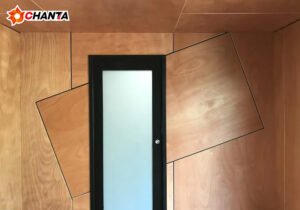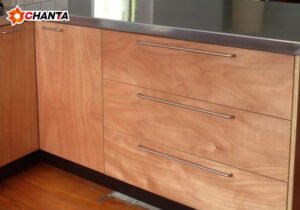Okoume veneer is a thin layer of wood sliced from the Okoume tree, which is native to Central Africa, particularly in countries like Gabon. Known for its smooth texture, light color, and consistent grain, Okoume veneer is widely used in the woodworking industry for its aesthetic appeal and versatility. But what exactly is Okoume veneer, and why is it so popular in various applications? Let’s dive in and explore its characteristics, benefits, and common uses.
What is a Veneer?
Before understanding Okoume veneer, it’s important to know what veneer is. Veneer is a thin slice of wood that is typically less than 1/8 inch thick. It is cut or peeled from a log and then glued onto a core material like plywood, MDF, or particleboard. Veneers are commonly used to give the appearance of solid wood while being more cost-effective and lightweight.
Okoume veneer is made from the wood of the Okoume tree, known for its straight grain and even texture. It is often sliced into sheets that can be used for a variety of decorative purposes in furniture and cabinetry, as well as for structural applications.
Characteristics of Okoume Veneer
1. Light Color and Aesthetic Appeal
Okoume veneer is known for its light, pale color that ranges from a light pinkish to a tan shade. Its fine, uniform grain and smooth texture make it a popular choice for furniture makers, cabinet makers, and interior designers. The subtle yet attractive appearance of Okoume veneer complements a wide range of interior design styles, from modern to traditional.
2. Durability and Strength
Although Okoume is a relatively lightweight wood, it is strong and durable when processed as veneer. The thin slices of Okoume maintain the wood’s natural strength, making it suitable for applications where both aesthetics and performance are needed. The veneer offers a balance of beauty and functionality without being too heavy.
3. Easy to Work With
Okoume veneer is easy to work with, especially when compared to other hardwoods. It can be cut, glued, and sanded with ease, which makes it a favorite among craftsmen and manufacturers. The veneer holds stains and finishes well, allowing for a smooth, high-quality finish on the final product.
Advantages of Okoume Veneer
1. Cost-Effective
Using Okoume veneer is an economical way to achieve the look of high-end wood without the high cost of solid wood. By applying a thin veneer layer over a less expensive core material, manufacturers can create beautiful products that mimic the appearance of solid wood, all while reducing material costs.
2. Lightweight
Okoume veneer is incredibly lightweight, making it easy to transport and handle. This characteristic is particularly useful in industries like furniture making and cabinet construction, where reducing the overall weight of the product can be crucial.
3. Sustainability
The Okoume tree grows quickly and is abundant in its native region of Central Africa, making it a relatively sustainable option compared to slower-growing hardwoods. Additionally, Okoume veneer is often sourced from responsibly managed forests, ensuring that it meets environmental standards and helps reduce deforestation.
4. Versatility
Okoume veneer is highly versatile. It can be applied to a variety of substrates, including plywood, MDF, and particleboard, allowing it to be used in a wide range of applications. Whether you’re building furniture, creating cabinetry, or even crafting musical instruments, Okoume veneer provides a flexible and attractive option.
Common Uses of Okoume Veneer
1. Furniture Making
Okoume veneer is a popular choice for furniture makers, particularly for creating high-quality, visually appealing pieces at a fraction of the cost of solid wood. Its light color and smooth texture make it ideal for modern furniture designs, cabinets, and shelving units. The veneer is often used on tabletops, drawer fronts, and cabinet doors to create a sleek and polished look.
2. Cabinetry
Okoume veneer is also a staple in the cabinetry industry. Its ease of workability and ability to hold finishes well makes it a go-to material for crafting custom cabinets. Whether for kitchens, bathrooms, or living spaces, Okoume veneer provides a high-end appearance while keeping costs lower than solid wood.
3. Interior Paneling
Okoume veneer is often used for wall paneling and other interior surfaces. The smooth, fine texture and aesthetic appeal of the veneer add a warm, natural touch to interior spaces. It is used in both residential and commercial projects, enhancing the overall ambiance with its light, fresh appearance.
4. Boat Building
Due to its light weight and strength, Okoume veneer is highly valued in boat building. It is used for constructing lightweight boat hulls, decks, and other structures. When treated with the right finishes, Okoume veneer can perform well in marine environments, offering both durability and aesthetics.
5. Musical Instruments
In the musical instrument industry, Okoume veneer is used to make parts of instruments such as guitar bodies, drum shells, and piano panels. The veneer’s fine grain and workability allow for precise construction and a professional finish, making it a popular choice for instrument makers.



